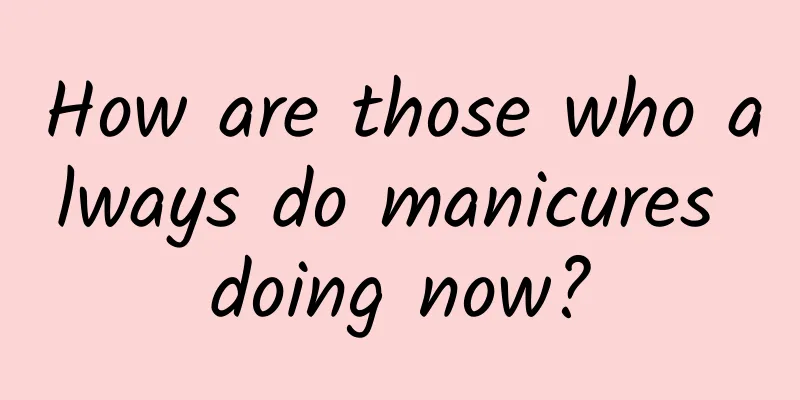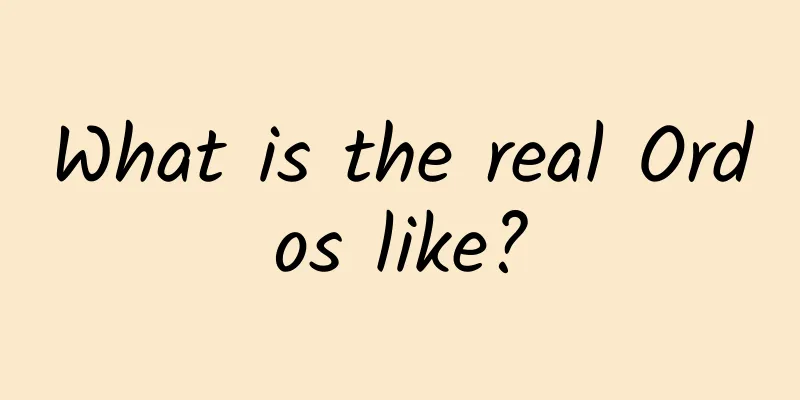How are those who always do manicures doing now?

|
Manicure has become an indispensable part of women's daily life. A beautiful and exquisite manicure can not only please oneself and enhance self-confidence, but also is a way to show personal style and personality. Nail art. Image source: AI generated by the author However, behind the prosperity of the nail industry there are also some problems, which pose hidden dangers to people's health. Is nail polish really safe? People who often do manicures may have heard this view: "Nail salons use nail polish gel, which is different from nail polish, does not contain formaldehyde and is not toxic." However, this is not the case. Nail polish is relatively safe under normal use, but it is not completely non-toxic. The main components of nail polish are resin, photoinitiator, and various additives (such as dyes, antioxidants, stabilizers and softeners, solvents, etc.). Among them, organic solvents such as acetone and ethanol are often used to adjust the viscosity and fluidity of nail polish, but they may evaporate during use and irritate the respiratory system and eyes. However, in order to save costs, some brands use materials that are harmful to the body, such as formaldehyde resin. In 2015, the Hangzhou Consumer Protection Committee tested 10 types of nail polish and 5 types of nail polish products on the Hangzhou market. In the test of volatile organic solvents, toluene and ethylbenzene were detected in all 15 batches, and the detection rate of xylene reached 93%. Some batches even contained lead, styrene, and isopropylbenzene. In the national cosmetics sampling inspection in 2023, 7 batches of cosmetics in Zhejiang and Guangdong also failed to meet the regulations, and banned raw materials such as dichloromethane and 1,2-dichloroethane were detected. Long-term exposure to these ingredients may cause many serious health problems. For example, long-term exposure to toluene, ethylbenzene, and xylene may cause respiratory irritation, respiratory inflammation, coughing and wheezing; formaldehyde, benzene, and acetaldehyde are considered to be potentially toxic and carcinogenic. In addition, the environment of nail salons still has potential risks. In 2019, Lupita Montoya and Aaron Lamplugh from the University of Colorado Boulder and Colorado State University jointly investigated six nail salons in Colorado. They regularly tested the volatile organic compound content in the air of these shops. Shockingly, the content of possible carcinogens such as benzene, toluene, and xylene in nail salons far exceeded the standard limits, and was even comparable to that of refineries and auto repair shops. Taking benzene as an example, the average benzene content in the air of one of the shops reached about 51.8μg/m3, far exceeding the US safety threshold standard (30μg/m3). This is not an isolated case. The research team of Shahid Beheshdi University of Medical Sciences in Iran also found that the levels of (possible) carcinogens such as benzene, formaldehyde and acetaldehyde in the 20 nail salons surveyed were also significantly higher than the outdoor concentrations. Another study conducted by the Michigan government in the United States found that the concentration of toluene in nail salons was 30 times higher than the outdoor level. Lupita et al.'s survey showed that 70% of nail salon employees had experienced short-term health symptoms related to this, including headaches, skin allergies, eye irritation, etc. Therefore, although nail polish is relatively safe under normal use conditions, consumers should still remain vigilant and choose reputable brands and products. Make sure to use nail polish in a well-ventilated environment and try to avoid prolonged exposure to the smell of organic solvents. The volatile organic compound content in the air of a nail salon may be far above the standard. Image source: Reference [1] Nail lamps may damage DNA Since gel nail polish dries much slower than nail polish, nail salons often use ultraviolet nail lamps to cure gel nails in a short time without having to wait for a long time for nail polish to dry naturally. However, nail lamps can cause harm to us. In 2009, two healthy women who had regular manicures and no family history of skin cancer suddenly developed skin cancer on their hands. These two unique case studies attracted researchers' attention to nail lamps. First, let's understand how nail lamps work. UV nail lamps are usually composed of multiple light-emitting diode (LED) bulbs. These bulbs are capable of emitting ultraviolet light with a wavelength between 365nm and 405nm, which is used to activate the photoinitiator in nail polish. Ultraviolet light (UV) is a type of electromagnetic radiation with a wavelength range of 10nm to 400nm, which is outside the violet part of the visible spectrum and is invisible to the human eye. In nail lamps, in order to indicate that the instrument is working, a common method is to use another violet lamp to emit violet light. Ultraviolet nail lamp. Image source: AI generated by the author Photoinitiators can absorb the energy of these specific wavelengths of ultraviolet light, thereby initiating polymerization or cross-linking reactions in the oligomeric resins in the nail polish. These two chemical reactions will form new chemical bonds between the molecules in the gel or coating material, forming a high-polymer structure, which will allow the gel to quickly solidify and harden into a hard and durable state. This "light-curing" technology has the advantages of being environmentally friendly and fast, and is used in many fields, such as 3D printing, coating and printing of materials such as metals and plastics, and packaging of electronic components. UV light curing principle. Image source: China LED Online High doses of ultraviolet radiation have been widely recognized as a factor in causing skin cancer. So can the ultraviolet light from nail lamps cause this consequence? In 2013, Julia Curtis and others from the University of Utah found that the ultraviolet radiation dose emitted by ultraviolet nail lamps is 4.2 times that of the sun. The data shows that in less than 10 minutes of manicure, the ultraviolet radiation dose received by the hands is equivalent to the recommended dose for a day of outdoor work. Comparison of spectral emission of the sun (black line) and nail lamp (yellow line) (Source: Reference [5]) Recently, Ludmil B. Alexandrov and others from the University of California, San Diego and the University of Pittsburgh have provided some molecular genetic evidence that nail lamp exposure may cause damage to us. Alexandrov used ultraviolet light to irradiate mouse cells and human cells. After two 20-minute irradiations (1 hour apart), about 20% to 30% of the cells died; if the irradiation was 20 minutes a day for three consecutive days, 70% of the cells died. In addition, the surviving cells showed signs of DNA damage and mutations associated with skin cancer. Although these results do not directly prove an increased cancer risk, frequent nail lamp exposure does suggest that there may be a considerable risk. Alexandrov and others call for epidemiological studies to further evaluate the physiological and carcinogenic effects of high-dose UV exposure on human skin, which may take at least a decade to complete. So, how can we protect ourselves while pursuing beauty? ① Reduce the frequency of manicures. Melissa Piliang, a dermatologist at the Cleveland Clinic in the United States, believes that several times a year is a relatively safe frequency. ② Choose reputable brands and products. Learn to read the ingredient list and choose safer water-soluble nail polish or nail stickers. ③ Make sure to use nail polish in a well-ventilated environment and try to avoid prolonged contact with the smell of organic solvents. ④ When doing manicures, you can take some preventive measures, such as wearing protective gloves, applying sunscreen cosmetics, etc., to reduce potential damage to your hands. References [1]Lamplugh,Aaron,etal."OccupationalexposuretovolatileorganiccompoundsandhealthrisksinColoradonailsalons." Environmentalpollution 249(2019):518-526. [2] Hadei, Mostafa, etal. "IndoorconcentrationsofVOCsinbeautysalons; associationwithcosmeticpracticesandhealthriskassessment." Journal of OccupationalMedicineandToxicology 13(2018):1-9. [3] Zhivagui, Maria, et al. "DNAdamageandsomaticmutationsinmammaliancellsafterirradiationwithanailpolishdryer." Naturecommunications 14.1(2023):276. [4]Bollard, StephanieMarie, et al. "SkincancerriskandtheuseofUVnaillamps." AustralasianJournalofDermatology 59.4(2018):348-349. [5]Curtis,Julia,etal."AcrylicnailcuringUVlamps:high-intensityexposurewarrantsfurtherresearchofskincancerrisk." Journal of the American Academy of Dermatology 69.6(2013):1069-1070. Author: Denovo Science Team Reviewer: Tang Qin, Director and Researcher of the Science Popularization Department of the Chinese Medical Association |
>>: This element, once mistakenly thought to constitute diamonds, has a surprising number of uses!
Recommend
Love concept "explosion"! 99% of the roses you received on Valentine's Day are fake?
Every February 14, all the roses in the flower sh...
The stability of the iOS system is getting worse and worse, and it has affected the core functions
I started using iOS 4, first with iPod touch, the...
Does Ocpc have a decline period? How to optimize?
After I published several Q&A articles about ...
Extremely sharp! Every year people are injured by it
The grass is green and the birds are singing, the...
Can "sugar-control rice" really control blood sugar? Steaming ordinary rice in this way can also help you stabilize blood lipids and blood sugar
Rice is an important staple food on the table and...
13 creative ways to play events, a must-have for marketing in 2020!
The homogeneity of current market competition is ...
Snowflakes can also kill people? Which buildings are the most vulnerable to snow? You will know after reading this!
Under the combined influence of cold and warm air...
Writing foolproof code
[[154940]] Over the past few months, I've dev...
"Men giving birth to children" has come true? For the first time, adult mice with two "fathers" have been bred | Science Weekly
Compiled by Zhou Shuyi and Pingsheng New research...
Tik Tok follower growth trend in 2021!
At the beginning of every year, short video creat...
Oncologist: The typical manifestations of 21 types of cancer are listed!
Reviewer of this article: Chen Haixu, Deputy Dire...
Xishi Tongue: A Millennium Journey from a Beauty Legend to a Delicacy
The sashimi belongs to the phylum Mollusca, class...
Is wine good for your health? Be careful when drinking homemade wine
Autumn is the season when grapes ripen. At this t...
Tips for creating hit products!
Whether a product is good or not is not determine...
How to carry out data tracking or promotion monitoring in information flow operations?
As we all know, data tracking and conversion is a...









